The lush green biodiversity park in Vishakhapatnam is a retired professor’s testimony to the philosophy of ‘practice what you preach’. Dr Mantha Ram Murthy, a marine biologist and former zoology professor at BVK College, built the breathtaking park, spread across three acres in the premises of RCD Hospital, to bring the chapters on various plant species that we read in school textbooks to life.
In the process, he founded the Dolphin Nature Conservation Society (DNCS) with his wife, Mangathayi, in 2001. The NGO in turn gathered students, volunteers and donors who worked in harmony towards building the park. The collective effort has resulted in a one-of-its-kind treasure trove of more than 2,000 plant species, some of which are rare and endangered, and 130 butterfly species.
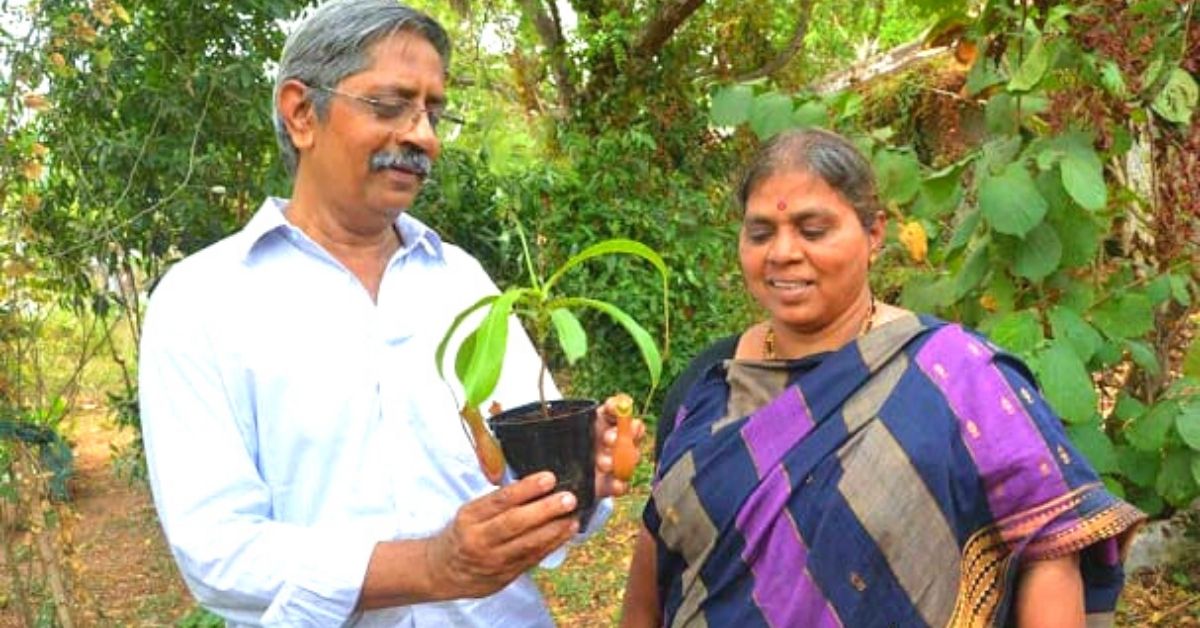
“The park is full of a unique and diverse ecosystem such as sacred groves, a desert zone, ponds, greenhouse, and cacti house. Additionally, it also boasts of 60 species of birds such as the Golden-backed Woodpecker, Spotted Owlet, Parakeets, Brahminy Starling, Greater Coucal, Red-whiskered Bulbul, Purple Sunbird and Barn Owl,” Dr Murthy, who retired in 2013, tells The Better India.
It comes as a surprise to many when Dr Murthy and his team reveal that the park was once a dumping ground for the hospital. The area was covered in weeds and algae, and filled with plastic and hospital waste. Due to this, soil fertility and health had deteriorated drastically.
However, Dr Murthy and his brilliant team of students took upon the daunting task of giving Andhra Pradesh its first ex-situ biodiversity park.
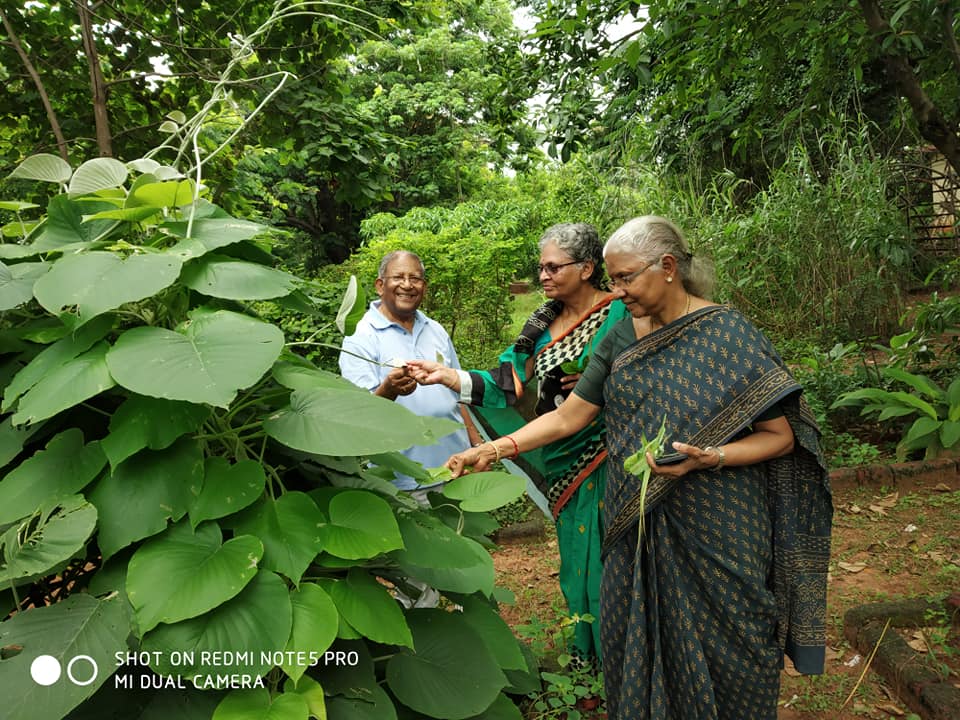
Shobha Mohan, a former student of Dr Murthy and a member of his team, says, “I was in the first batch (1996) that got the chance to go beyond the confines of a traditional classroom learning system and participate in the plantation drive with Murthy sir. I was involved in planting, cutting stems, and so on. As a student, I realised the importance of conservation and at 32, I started my own venture to promote conservation-based tourism, all thanks to Murthy sir and the impact he had on me,” Shobha, who is now a donor member of DNCS, tells The Better India.
Turning a dumping ground into an asset

Dr Murthy began his journey as a member of the Penguin Nature Club, formed in 1987 at the BVK College, in affiliation with WWF-India. This was one of the first nature awareness groups to spring up in the city. Members, which included professors and students, undertook conservation campaigns for Olive Ridley turtles, snakes, water and green cover, among many other such issues.
He had been deeply disturbed by environmental degradation and its future repercussions. “I wanted to do something beyond just planting trees, something that would last a lifetime. What better than educating students and people through a biodiversity park? We found a waste plot, took permissions and began the project,” he recalls.
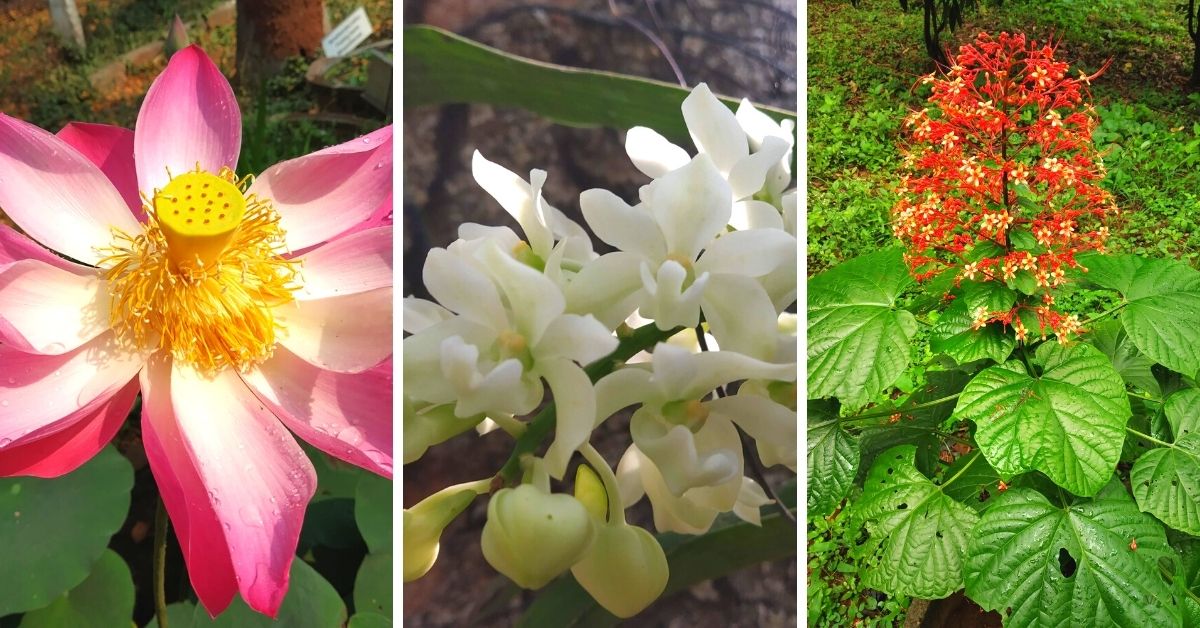
Initially, the hospital gave the team an area of 1,000 square feet to work in. The team cleared garbage, and desilted and replenished the red soil using organic compost and dry leaves. They collected seeds from various parts of India, including Western Ghats, Uttarakhand, Odisha, Tamil Nadu and Kerala.
“We developed the mini plant kingdom using the ex-situ method. It translates to ‘off-site conservation’ wherein endangered species, varieties, or breeds of the plant are protected outside their natural habitat. However, this is a challenging method, as we had to simulate sunlight, humidity and temperature to suit varied plants,” says Dr Murthy.
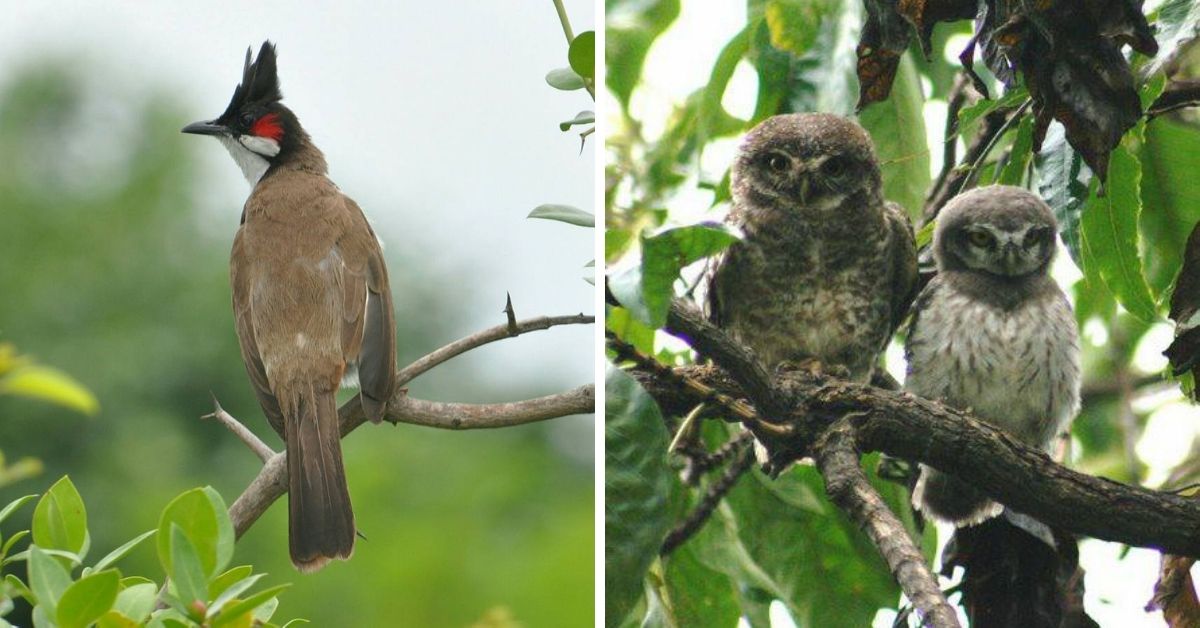
To accumulate as many plants as possible on a limited piece of land, the team arrested plant growth by cutting branches, planting bonsai versions of big trees such as banyan, and promoting dwarf trees. They continued this strategy even after acquiring more land.

Financial restraints, water availability and survival rate of the plants remain concerns even after 20 years. Dr Murthy says he has spent nearly Rs 13,00,000 from his savings to build the park. Other floating stakeholders including donors, corporations and district administration have also given money.
The average survival rate of all the plants is anywhere between 50-60%. The biggest problem they face is termite mounds formed due to the presence of dry leaves, which are used for mulching. While the DNCS uses organic solutions such as neem to get rid of termites, some plants are still damaged.
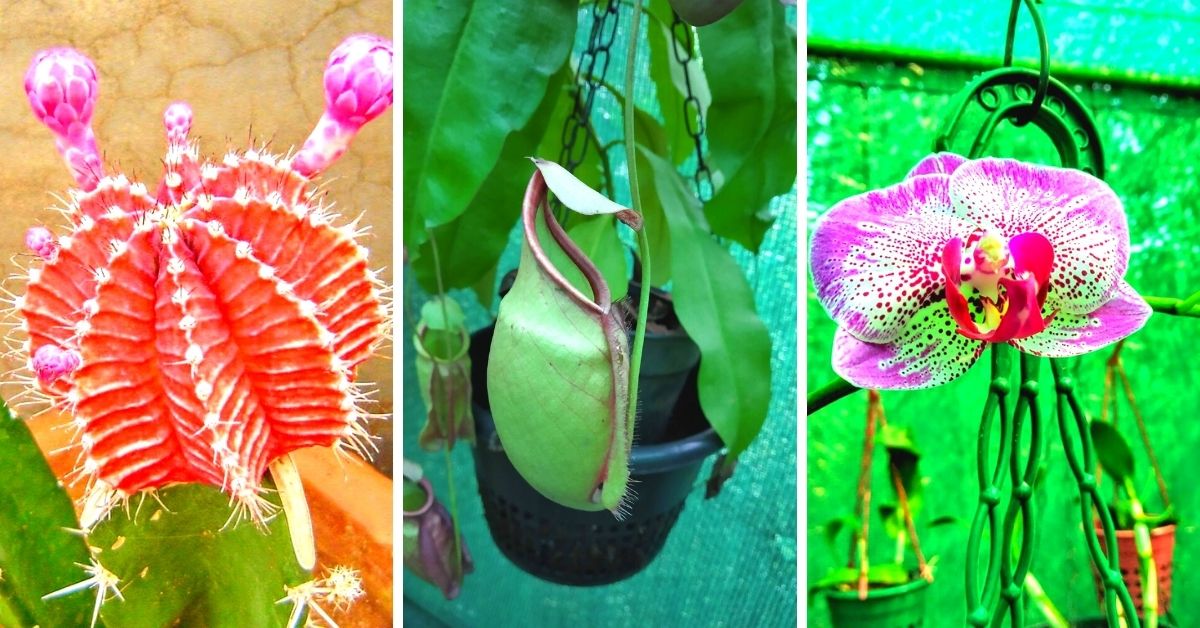
However, the team is constantly working on solutions to run the park. Their exemplary efforts were seen in 2014 during Cyclone Hudhud, which caused extensive damage in the area. Almost all tree species were uprooted, fences were destroyed, and the pond, greenhouse and cacti house collapsed. The park was rejuvenated within one year by student volunteers with government support.
“There are several issues that we tackle routinely, but the joy and pleasant surprise on people’s faces every time they learn a new fact or see a weird leaf keeps us going,” adds Dr Murthy.
Know your plants & butterflies
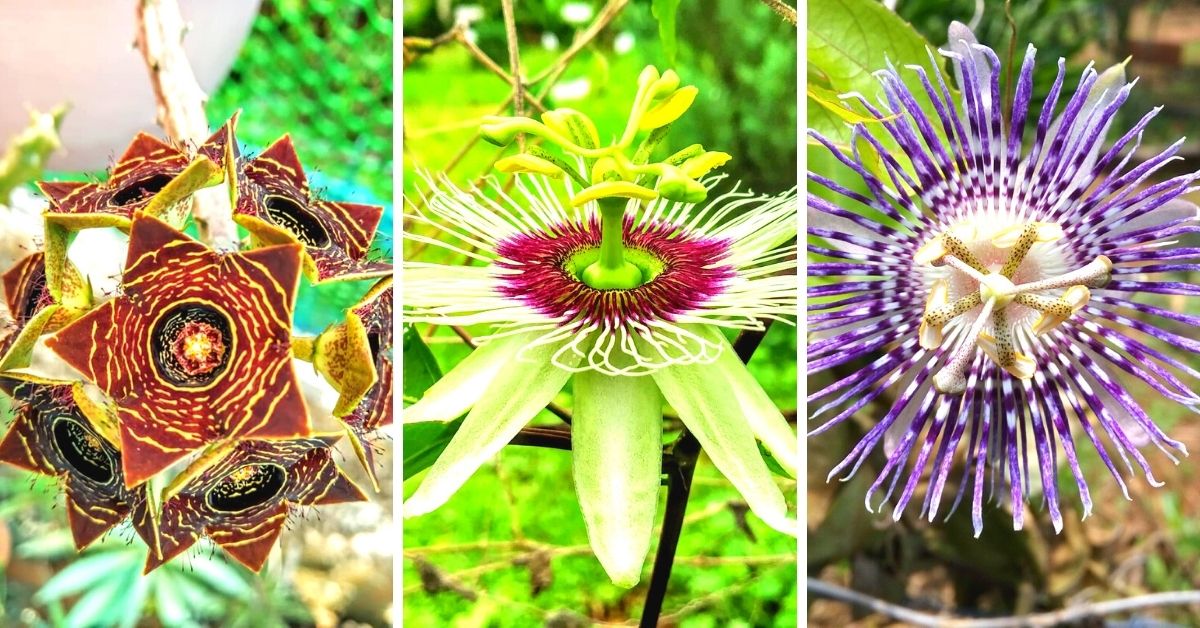
The park is divided into ten zones — sacred groves, living fossil plants of Jurassic times (Gymnosperms), cacti and succulents, ornamental plants, aquatic plants, medicinal or herbal and aromatic plants, insectivorous plants, orchids, ferns, bamboo, and palm groves.
The park is a nature lover’s paradise, and some rare and endangered species found here include Maidenhair trees (Ginkgo biloba) Krishna’s Buttercup, Jesus Smile, Autograph Tree, Upside-down Tree, Mickey Mouse Tree, Laughing Buddha Bamboo, and Octopus Tree.
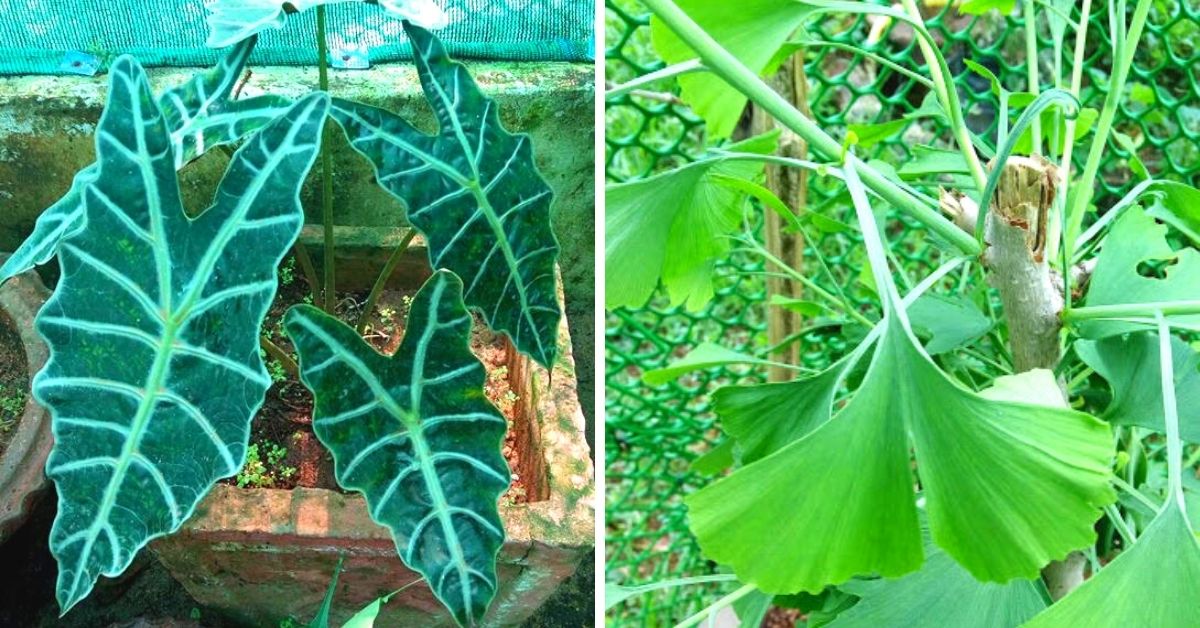
“The Ginkgo biloba is a living fossil, dating back to the age of dinosaurs. It has survived an atomic bomb explosion during the World War and is considered a sacred tree in Buddhist monasteries in China and Japan. . We have all the twenty-one plants whose leaves are used to worship Lord Ganesha. The leaves of one tree are shaped like Mickey Mouse. We have innumerable delights in our park,” says Dr Murthy.
The park also has 500 species of medicinal and herbal plants such as Pterocarpus santalinus, Santalum album and Gloriosa superba. There are 100 and 300 varieties of cacti and succulents respectively. The park has mangrove plants like the Avicennia marina with respiratory roots or pneumatophores, and five species of bamboo groves including the Laughing Buddha, Bambusa ventricosa, Golden bamboo and Green bamboo.
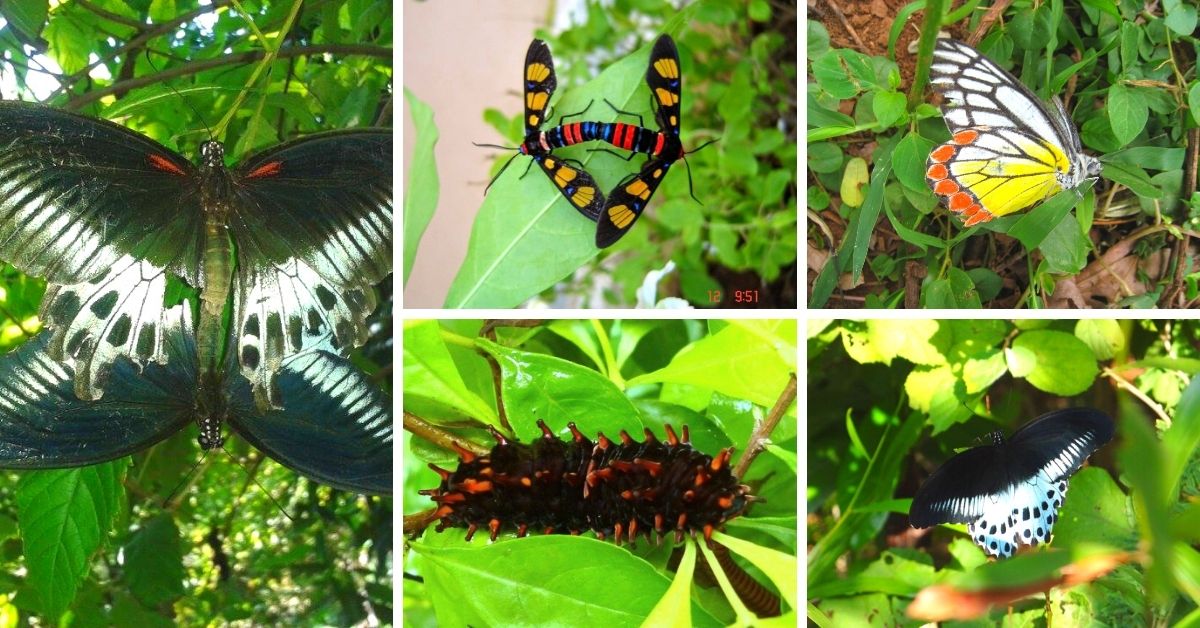
The butterflies mostly belong to the six families — Papilionidae (swallowtails), Pieridae (whites and yellows), Nymphalidae (brush-footed butterflies), Lycaenidae, Riodinidae (metalmarks/Punches and Judies) and Hesperiidae. They feed on nectar, pollen of flowers and minerals from wet soil.
“The flora and fauna of this park is the web of life in a nutshell. All this fresh organic produce, clean water, and medicines wouldn’t be present if it wasn’t for the rich biodiversity that accommodates everything, from the smallest microbes to birds, animals, and humans,” adds Dr Murthy.
Edited by Divya Sethu
No comments:
Post a Comment